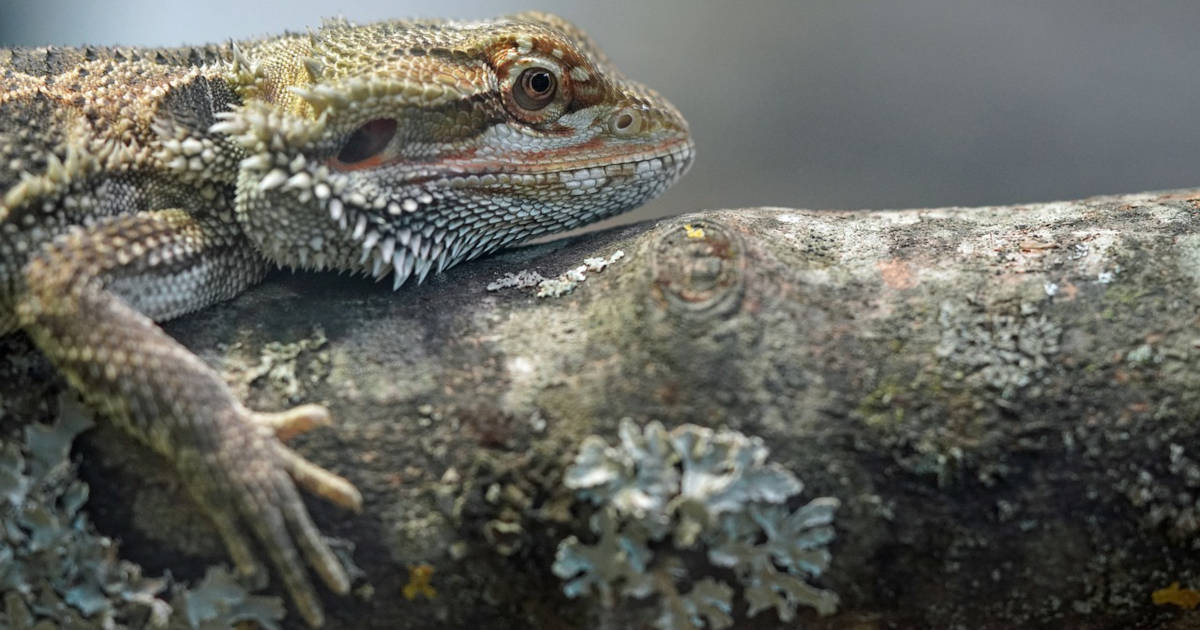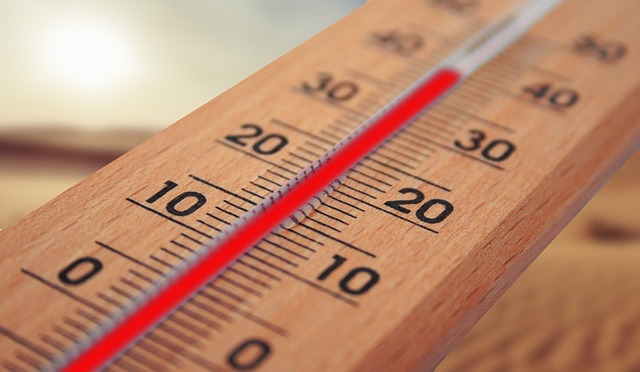Why is my Bearded Dragon Twitching?
Find out why your bearded dragon is twitching. Possible causes include injury, dehydration, stress, illness, parasites, temperature fluctuations and poor diet.

Last Updated: January 14th, 2023
By: Steve
Table of Contents
Do you have a bearded dragon that has started twitching? You’re probably wondering why this is happening and how to stop it. One of the biggest reasons for bearded dragon twitching is metabolic bone disease – which is caused by a lack of Vitamin D3 and/or calcium.
However, twitching in bearded dragons can be caused by a variety of factors including stress, excitement and other health issues. It’s important to identify the root cause of the twitching so that you can take the necessary steps to make sure your pet is healthy and happy.
To determine why your bearded dragon is twitching you’ll need to consider its environment, diet and overall health. If the twitching persists or worsens it’s definitely best to consult with your veterinarian for further advice. With proper care, you can help ensure that your beardie stays healthy and active.
Injury as a Cause of Bearded Dragon Twitching
Injury is certainly one possible cause of a twitching bearded dragon. Accidents such as falls or being dropped can result in fractures, sprains or other internal injuries that may cause them to twitch. It’s also possible that the twitching could be caused by neurological damage resulting from head trauma.
If your bearded dragon has had a fall recently, or some form of other trauma (including being attacked by another bearded dragon, as bearded dragons will try to eat each other if they can) then we’d definitely recommend a vet visit.
Of course, prevention is better than cure and as such it’s important to make sure your bearded dragon as a secure and safe habitat that reduces the risk of injury. You should monitor your pet regularly for any signs of pain or discomfort such as shaking or twitching, and seek veterinary advice if this occurs.
The vet may want to take X-rays or perform other tests to determine the extent of the injury and what treatment is required. With proper care and attention, even minor injuries can be managed effectively and your bearded dragon can often make a full recovery.
Stress
Although relatively unlikely, it’s possible that your bearded dragon is experiencing stress. Stress can manifest in a variety of ways one of which is twitching. It’s important to understand the signs and symptoms of stress in bearded dragons so that you can take the necessary steps to alleviate it.
If your bearded dragon is stressed they will potentially display stress marks on the underside of their belly. These are stripes which are present all the time on the belly of your bearded dragon but during times where they’re stressed they’ll appear much darker. You bearded dragon may stop eating due to stress too.
Stress in bearded dragons can be caused by multiple factors. These include changes to their environment such as temperature, lighting, or humidity levels; over-handling; inadequate nutrition; or even an unfamiliar presence in their habitat.
To reduce stress, make sure that your bearded dragon’s vivarium is well-maintained and provide them with plenty of hiding spots and places to retreat to. Also try to handle them less frequently and give them a balanced diet full of vitamins and minerals. If these measures are taken but your bearded dragon is still exhibiting signs of stress, consider consulting with a reptile vet for further advice.
Illness Is The Most Likely Cause of Bearded Dragon Twitching
Twitching can often be a sign of illness in bearded dragons, so it’s important to take action if you see your pet displaying this symptom. One common cause of twitching in bearded dragons is metabolic bone disease (or MBD), which can occur if they’re not receiving enough Vitamin D3 or calcium in its diet. MBD is a serious and ultimately fatal disease for bearded dragons and many people don’t realize that beardies need a long UVB light in their enclosure (a coil light will NOT do) and that this light needs replacing every 6 to 9 months for maximum efficacy.
Other potential illnesses that can cause bearded dragon twitching include respiratory infections, parasites or fungal infections. In some cases twitching may be a sign of neurological issues such as seizures or strokes.
If you suspect that your pet might be ill, it’s important to seek professional veterinary advice as soon as possible. Your vet will be able to accurately diagnose the problem and provide the best treatment options for your scaly friend. This is particularly important if you suspect MBD as the culprit because the only real way to tell will be blood calcium level tests – which the vet will of course need to perform.
Parasites
A twitching bearded dragon could be a sign they’ve picked up a parasite infection. Parasites are tiny organisms that feed off the nutrients from their host, in this case, your beloved pet reptile. All bearded dragons carry some parasites and in general these don’t bother them at all. Things only end up causing symptoms if the levels become too high and they start making your bearded dragon unwell.
The most common types of parasites found in bearded dragons are pinworms, roundworms, and coccidia. These parasites can cause a range of symptoms including decreased appetite, diarrhea, weight loss, anemia and of course, twitching. It is important to identify these parasites as soon as possible to stop them from causing more damage to your pet’s health.
Fortunately, treating parasitic infections is relatively easy with the right medication and preventative measures like regular cleaning of the habitat and avoiding contact with other infected animals. If you think your bearded dragon may have parasites, it’s best to take them to a veterinarian right away for diagnosis and treatment. It’s likely that the vet will want you to take them a sample of your bearded dragon’s poop for investigation under a microscope to determine the level of parasites in their body.
Temperature Fluctuations

Image by Gerd Altmann from Pixabay
If you’ve noticed that your bearded dragon is twitching, it could be due to temperature fluctuations. Temperature fluctuations can cause stress in your reptile, which may lead to twitching. To ensure your pet’s health and safety, it’s important to keep your bearded dragon’s environment stable. Temperature also affects your bearded dragons metabolism and calcium uptake, so it’s vitally important to get it right.
Bearded dragons require specific temperatures in order to remain healthy and active. During the day, the temperature should reach anywhere from 100-108 °F (38-42 °C), while at night the temperature should drop to between 70-75°F (21-24°C).
If temperatures fluctuate too much by either getting too hot or too cold then your bearded dragon may become stressed and start twitching. To avoid this you’ll need to make sure your bearded dragon’s enclosure has a reliable thermostat that can maintain a consistent temperature throughout the day and night. A thermometer is one of the most important pieces of bearded dragon equipment you’ll need (not including the UVB lamp!)
Make sure you take the appropriate measures to prevent drafts or other sudden changes in temperature in your bearded dragon’s tank too. Make sure the room where your bearded dragon’s enclosure is located gets adequate ventilation but definitely avoid positioning it near windows or other places where any drastic changes in temperature can occur. Too much heat is every bit as dangerous as too little – and siting the tank in a window will amplify the effect of the sun on sunny days and overheat the enclosure and your poor bearded dragon.
Poor Diet Can Cause Bearded Dragons to Twitch
A bearded dragon who isn’t getting enough of the right foods can suffer from nutritional deficiencies and have health problems. An unbalanced diet can cause twitching, as well as other issues like weight loss, lethargy and an inability to properly digest food.
To keep your dragon healthy make sure they’re getting enough calcium and vitamins in their diet, as well as a variety of insect proteins and vegetables. Be careful not to overfeed them or give them too much of one item, as this could lead to obesity and other health issues.
It’s especially important to feed your bearded dragon food that has enough calcium in it – or to dust the food with calcium and Vitamin D3 supplement powder. Calcium is an important mineral for bearded dragons as we’ve seen throughout this post.
Summary
It is important to figure out why your bearded dragon is twitching in order to take the necessary steps to keep them healthy and well.
Injury can sometimes be a cause of twitching in bearded dragons. If your dragon has experienced an injury it may twitch due to pain or irritation of the injured area. Other injuries to nerves can also cause bearded dragon twitching so it is important to take them to a veterinarian for treatment.
Illness, especially metabolic bone disease can also lead to twitching in bearded dragons. If your dragon appears ill or seems weak, it could be due to an underlying medical condition that needs to be treated by a veterinarian. Make sure you monitor their behavior closely and take them to the vet if you notice any changes in their activity level or eating habits.
Parasites can also be a cause of twitching in bearded dragons. These parasites can be internal or external and require treatment from a veterinarian in order to resolve the issue. Make sure you inspect your dragon regularly for signs of parasites such as lumps on their skin or changes in appetite or behavior.
Finally, poor diet can also cause twitching in bearded dragons since they require certain nutrients for optimal health and development. Be sure that your dragon’s diet consists of both plant-based foods (such as vegetables) and animal-based foods (such as crickets). You should also avoid overfeeding them since this could lead to digestion problems which could manifest through twitching behaviors as well.
If you’ve enjoyed this post please feel free to share it with your friends using the buttons below. If you have any comments, questions or other feedback please let us know using the comment form below.
Thanks for reading!
